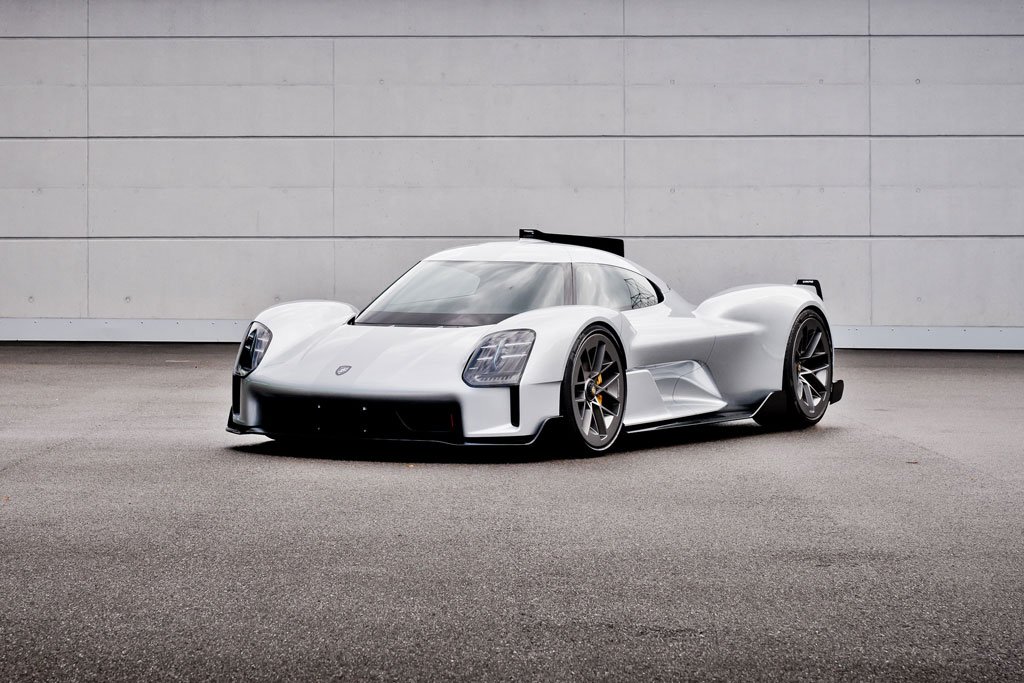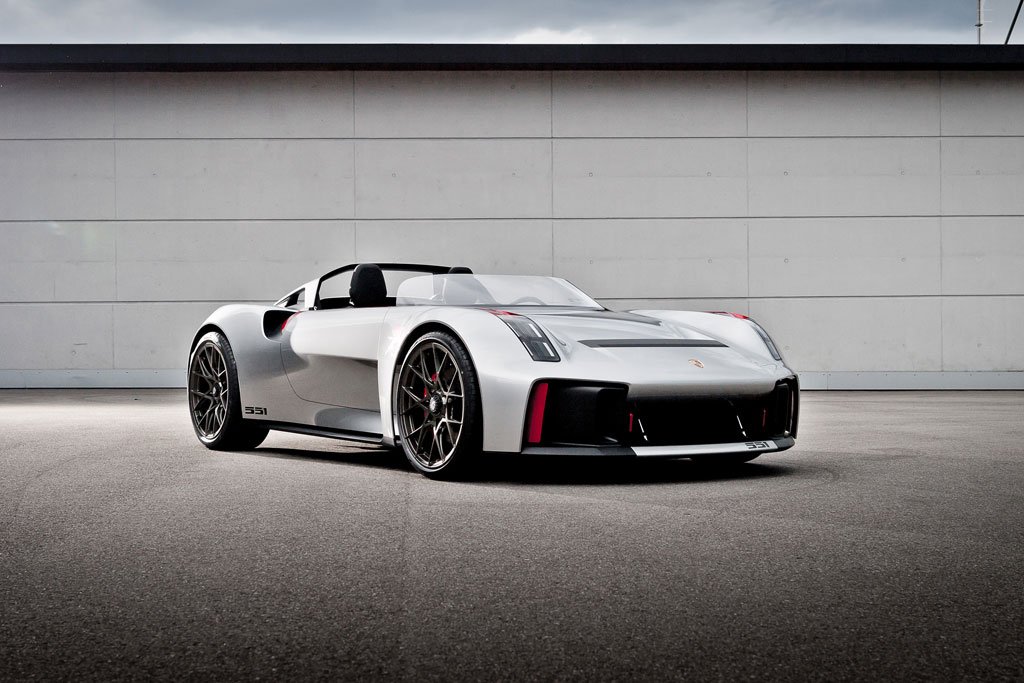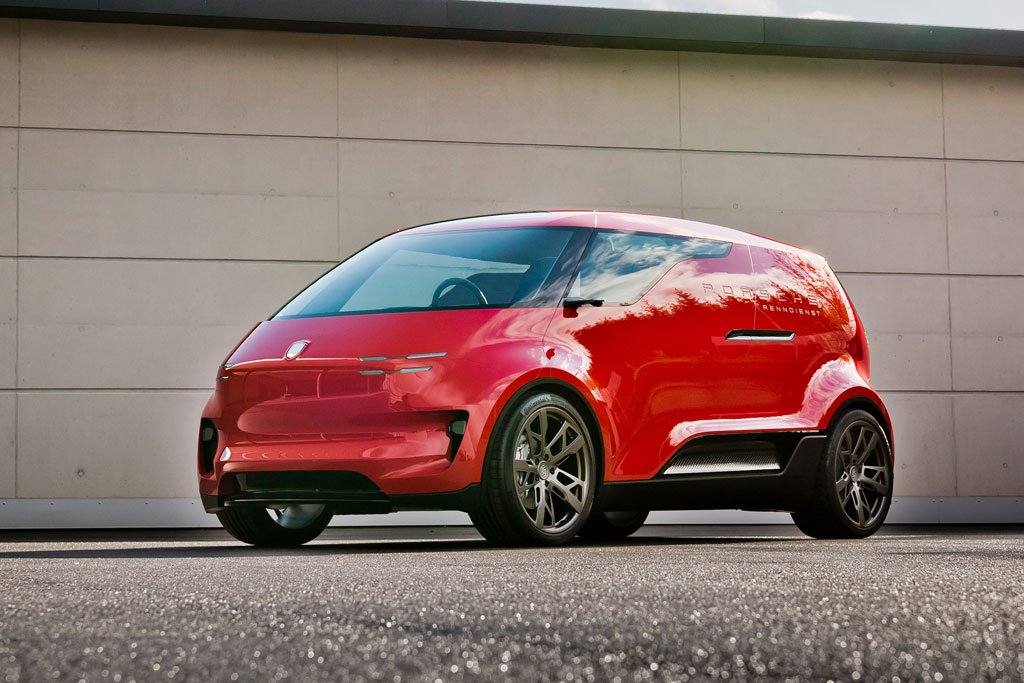'Porsche Unseen' provides a glimpse of unreleased concept cars
13 Nov 2020|1,264 views
Previously unpublished design studies are being presented exclusively by the Porsche Newsroom in a series of articles. The 9:11Magazine web TV has also dedicated an episode to selected studies and examines the connection between the studies and the current production models together with Porsche Chief Designer Michael Mauer.
For fans of the brand, the book entitled 'Porsche Unseen' will be released on 12 November 2020 by the Delius Klasing publishing house. Interested readers are given a detailed look behind the scenes of Style Porsche. A selection of studies will also be on display later for fans to admire live at the Porsche Museum, which will be integrating the models in the exhibition in 2021.
The design process starts with a sketch. This is visualised in the next step as a 3D model. As soon as an idea is to be developed further, small models are produced in a scale of 1:3, then followed by hard models in the scale 1:1.
"The virtual world is the first step, but you especially have to experience the unusual models in reality in order to understand whether a car has small, large or surprising proportions," says Michael Mauer, Vice President Style Porsche.
In contrast to the development of a production model where several models are always developed with different styling formats, the vision projects, on the other hand, concentrate on a single vision model that serves as a protagonist for the central idea.
Based on this idea, Porsche develops the product and brand identity that characterises and secures the appearance of all models in the long term. The design language for future models develops from the long-term vision.
"The virtual world is the first step, but you especially have to experience the unusual models in reality in order to understand whether a car has small, large or surprising proportions," says Michael Mauer, Vice President Style Porsche.
In contrast to the development of a production model where several models are always developed with different styling formats, the vision projects, on the other hand, concentrate on a single vision model that serves as a protagonist for the central idea.
Based on this idea, Porsche develops the product and brand identity that characterises and secures the appearance of all models in the long term. The design language for future models develops from the long-term vision.
The Porsche 919 Street was developed on the basis of the technology used in the Porsche 919 Hybrid, promising to make the exhilarating driving experience of the LMP1 race car available to amateur drivers.
Under the outer shell are the carbon monocoque and powerful 887bhp hybrid racing drivetrain that helped the Porsche 919 Hybrid to achieve numerous victories at Le Mans. The dimensions and wheelbase are also the same as on the race car.
With its spartan, puristic cockpit, the characteristic radiator grilles over the mid engine, red graphic elements and the suggested fins at the rear, the compact Porsche Vision Spyder clearly calls to mind the Porsche 550-1500 RS Spyder from 1954. At the same time, the study was intended to further develop the design identity of Porsche and provide a pool of ideas for future details - for example, the ultra-modern roll bar.
The Porsche vision 'Renndienst' is the free interpretation of a family-friendly space concept for up to six persons. The design team designed a futuristic 'space shuttle' with exciting proportions. The study shows how the Porsche design DNA, with its characteristic surface modelling, can be transferred to an unknown vehicle segment for the brand.
In the interior, passengers find a comfortable and modular travel cabin. The driver sits in a central driver's seat. The all-electric drive technology is located in the underbody. As a result, passengers can enjoy an unexpectedly generous space and travel experience combined with Porsche-like flair.
In the interior, passengers find a comfortable and modular travel cabin. The driver sits in a central driver's seat. The all-electric drive technology is located in the underbody. As a result, passengers can enjoy an unexpectedly generous space and travel experience combined with Porsche-like flair.
Previously unpublished design studies are being presented exclusively by the Porsche Newsroom in a series of articles. The 9:11Magazine web TV has also dedicated an episode to selected studies and examines the connection between the studies and the current production models together with Porsche Chief Designer Michael Mauer.
For fans of the brand, the book entitled 'Porsche Unseen' will be released on 12 November 2020 by the Delius Klasing publishing house. Interested readers are given a detailed look behind the scenes of Style Porsche. A selection of studies will also be on display later for fans to admire live at the Porsche Museum, which will be integrating the models in the exhibition in 2021.
The design process starts with a sketch. This is visualised in the next step as a 3D model. As soon as an idea is to be developed further, small models are produced in a scale of 1:3, then followed by hard models in the scale 1:1.
"The virtual world is the first step, but you especially have to experience the unusual models in reality in order to understand whether a car has small, large or surprising proportions," says Michael Mauer, Vice President Style Porsche.
In contrast to the development of a production model where several models are always developed with different styling formats, the vision projects, on the other hand, concentrate on a single vision model that serves as a protagonist for the central idea.
Based on this idea, Porsche develops the product and brand identity that characterises and secures the appearance of all models in the long term. The design language for future models develops from the long-term vision.
"The virtual world is the first step, but you especially have to experience the unusual models in reality in order to understand whether a car has small, large or surprising proportions," says Michael Mauer, Vice President Style Porsche.
In contrast to the development of a production model where several models are always developed with different styling formats, the vision projects, on the other hand, concentrate on a single vision model that serves as a protagonist for the central idea.
Based on this idea, Porsche develops the product and brand identity that characterises and secures the appearance of all models in the long term. The design language for future models develops from the long-term vision.
The Porsche 919 Street was developed on the basis of the technology used in the Porsche 919 Hybrid, promising to make the exhilarating driving experience of the LMP1 race car available to amateur drivers.
Under the outer shell are the carbon monocoque and powerful 887bhp hybrid racing drivetrain that helped the Porsche 919 Hybrid to achieve numerous victories at Le Mans. The dimensions and wheelbase are also the same as on the race car.
With its spartan, puristic cockpit, the characteristic radiator grilles over the mid engine, red graphic elements and the suggested fins at the rear, the compact Porsche Vision Spyder clearly calls to mind the Porsche 550-1500 RS Spyder from 1954. At the same time, the study was intended to further develop the design identity of Porsche and provide a pool of ideas for future details - for example, the ultra-modern roll bar.
The Porsche vision 'Renndienst' is the free interpretation of a family-friendly space concept for up to six persons. The design team designed a futuristic 'space shuttle' with exciting proportions. The study shows how the Porsche design DNA, with its characteristic surface modelling, can be transferred to an unknown vehicle segment for the brand.
In the interior, passengers find a comfortable and modular travel cabin. The driver sits in a central driver's seat. The all-electric drive technology is located in the underbody. As a result, passengers can enjoy an unexpectedly generous space and travel experience combined with Porsche-like flair.
In the interior, passengers find a comfortable and modular travel cabin. The driver sits in a central driver's seat. The all-electric drive technology is located in the underbody. As a result, passengers can enjoy an unexpectedly generous space and travel experience combined with Porsche-like flair.
Latest COE Prices
December 2025 | 2nd BIDDING
NEXT TENDER: 07 Jan 2026
CAT A$109,501
CAT B$115,102
CAT C$77,003
CAT E$119,000
View Full Results Thank You For Your Subscription.







































